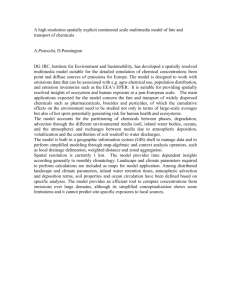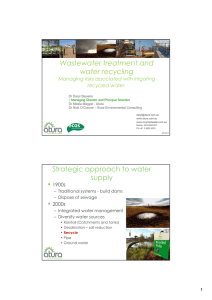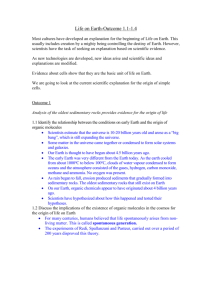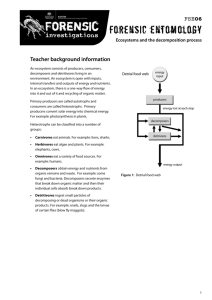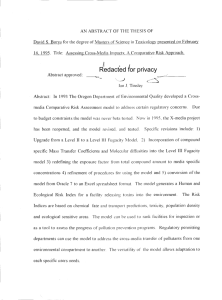Detritivores and Decomposers
advertisement
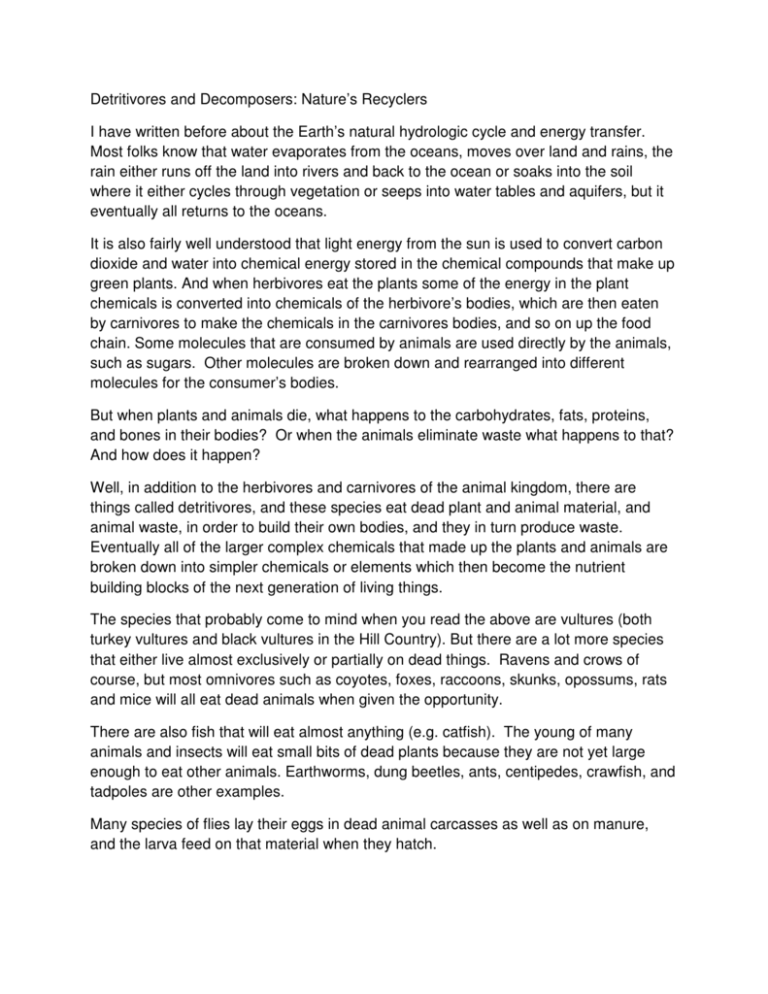
Detritivores and Decomposers: Nature’s Recyclers I have written before about the Earth’s natural hydrologic cycle and energy transfer. Most folks know that water evaporates from the oceans, moves over land and rains, the rain either runs off the land into rivers and back to the ocean or soaks into the soil where it either cycles through vegetation or seeps into water tables and aquifers, but it eventually all returns to the oceans. It is also fairly well understood that light energy from the sun is used to convert carbon dioxide and water into chemical energy stored in the chemical compounds that make up green plants. And when herbivores eat the plants some of the energy in the plant chemicals is converted into chemicals of the herbivore’s bodies, which are then eaten by carnivores to make the chemicals in the carnivores bodies, and so on up the food chain. Some molecules that are consumed by animals are used directly by the animals, such as sugars. Other molecules are broken down and rearranged into different molecules for the consumer’s bodies. But when plants and animals die, what happens to the carbohydrates, fats, proteins, and bones in their bodies? Or when the animals eliminate waste what happens to that? And how does it happen? Well, in addition to the herbivores and carnivores of the animal kingdom, there are things called detritivores, and these species eat dead plant and animal material, and animal waste, in order to build their own bodies, and they in turn produce waste. Eventually all of the larger complex chemicals that made up the plants and animals are broken down into simpler chemicals or elements which then become the nutrient building blocks of the next generation of living things. The species that probably come to mind when you read the above are vultures (both turkey vultures and black vultures in the Hill Country). But there are a lot more species that either live almost exclusively or partially on dead things. Ravens and crows of course, but most omnivores such as coyotes, foxes, raccoons, skunks, opossums, rats and mice will all eat dead animals when given the opportunity. There are also fish that will eat almost anything (e.g. catfish). The young of many animals and insects will eat small bits of dead plants because they are not yet large enough to eat other animals. Earthworms, dung beetles, ants, centipedes, crawfish, and tadpoles are other examples. Many species of flies lay their eggs in dead animal carcasses as well as on manure, and the larva feed on that material when they hatch. Thus much of dead plant material and animal bodies and waste are recycled into other organisms, all of which perform a service we can all appreciate. If something didn’t take care of all of the dead leaves and animal bodies and waste, the forest floor would be many feet deep in these materials. And of course if these raw materials were not being recycled, we would eventually, if we had not already, run out of things. But the process doesn’t stop there. Organisms frequently called “decomposers”, usually bacteria and fungi such as mold and mushrooms, further break down dead organic material into its simplest molecules and elements and return these simpler materials back to the ecosystem as carbon dioxide and water, plus various minerals such as nitrates, calcium, phosphorous and potassium. And it is these organisms that decompose organic litter on the surface of the soil into small enough particles to be carried into the soil by rainwater and where other bacteria and fungi convert many of these minerals into forms that can be taken up by the roots of plants. Mother Nature doesn’t waste anything! Everything is recycled. Atoms are essentially indestructible. Every Hill Country gardener knows that the component of our soil that is most lacking is organic matter and it is organic matter that helps make the soil porous, light and airy as well as being a source of important nutrients. When gardeners compost dead plant material and then put it on their vegetable gardens or flower beds they are simply using Nature’s process to break down organic matter into simpler compounds and making it available for their living plants, as well as maintaining their soil in a healthy, fertile state. Until next time… Jim Stanley is a Texas Master Naturalist and the author of the book “Hill Country Landowner’s Guide”. He can be reached at jstmn@ktc.com. Previous columns can be seen at www.hillcountrynaturalist.org.




